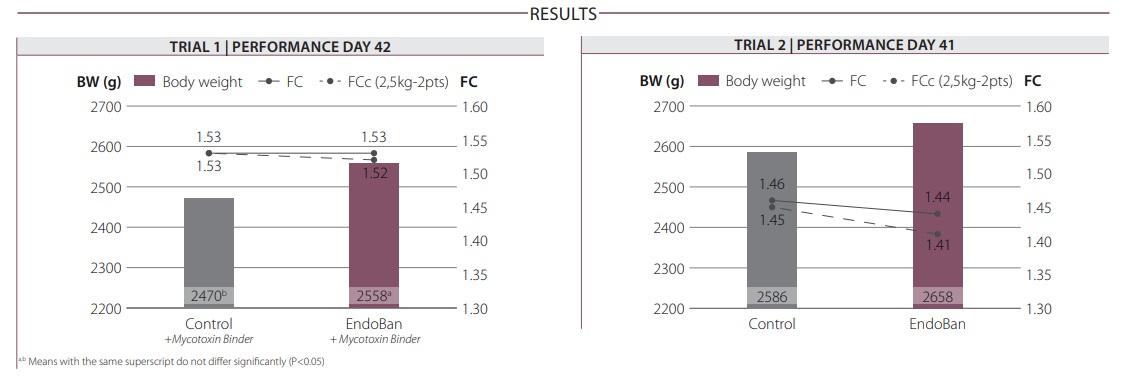Improving broiler performance with a strategy that reduces the endotoxin related triggering of the immune system.
Published: May 10, 2019
By: Stoops Jesse, Willemsen Hilke, Van de Mierop Kurt. Nutrex nv, Belgium
The Problem
Endotoxins are potentially toxic compounds from bacterial origin. The most well-known endotoxins are lipopolysaccharides (LPS), which are part of the cell wall of Gram-negative bacteria. In poultry, the GI tract is a large reservoir of microorganisms, and therefore the most important source of endotoxins. During normal bacterial division and lysis, LPS molecules are released into the lumen. Once absorbed from the lumen, endotoxins induce an inflammatory response, thus wasting energy and nutrients meant for growth and production. The intestinal integrity is critical for the prevention of endotoxin translocation through both transcellular and paracellular pathways. Several factors (e.g. heat stress, mycotoxins, pathogens, feed transition) are known to increase gut permeability, promoting leakage of endotoxins. Moreover, translocated endotoxins may facilitate the passage of larger amounts of endotoxins through increased permeability of the intestinal barrier. Therefore, EndoBan, a unique feed additive that combines different strategies to avoid the negative effects of endotoxins, was developed. The aim of this study was to evaluate the effect of EndoBan on broiler performance.
How we investigated or researched the problem
Two trials were conducted in which Ross 308 female broiler chicks were reared in an environmentally controlled poultry house (Zootechnical Centre, Belgium) for 41 and 42 days for trial 1 and 2, respectively. A two phase dietary program (starter d0-14 and grower/finisher d14-end) was used in which all diets were fed ad libitum. In both trials, 216 broilers were randomly allocated to 2 treatments with 6 replicates per treatment (18 birds/pen). In trial 1, treatment 1 was a corn-soy-based control diet which already contained a broad-spectrum mycotoxin binder at 1 kg/T of feed and treatment 2 an EndoBan supplemented (0.5 kg/T feed) control diet. In trial 2, treatments included a wheat based control diet and an EndoBan supplemented (1.0 kg/T feed) control diet. Body weight and feed intake were recorded on d1, d14 and at the end. Mortality was registered daily, dead birds were weighed and feed intake was corrected to adjust the feed conversion (FC). A corrected FC was calculated, with a correction of 2 points per 100g deviation from a reference weight of 2500g.


Results
In trial 1, supplementation of EndoBan significantly improved (p < 0.05) final body weight of female broilers to 2558 g compared to 2470 g for the control group. Feed conversion was comparable for both treatments (1.53 and 1.52 for the control diet and EndoBan supplemented diet, respectively). In trial 2, female broilers supplemented with EndoBan reached a higher body weight (2658 g) and lower feed conversion (1.41) compared to broilers that received the control diet (2586 g and 1.45).
Implications / Conclusions
The results of this study indicate that EndoBan can improve growth performance of broilers, even when a mycotoxin binder is already present in the feed.
Content from the event:
Related topics:
Authors:
Nutrex
Nutrex
Influencers who recommended :
Biplab Kumar DebRecommend
Comment
Share

Would you like to discuss another topic? Create a new post to engage with experts in the community.










.jpg&w=3840&q=75)